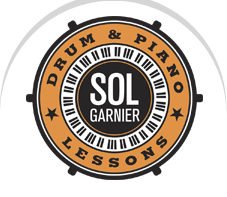If one turns on the radio these days, we hear straight eighth notes music. For the ones who are not familiar with the term “Straight eighth notes”, it means rock. You turn on the radio and you are going to hear some kind of a version of a rock beat, whether it’s country, heavy metal, classic rock, alternative, it will have a strong rock beat pushing behind. Straight eighth notes.
And they are great! I will, one day, sing the depth and power of those beats. But not today.
Today I am going to talk about the other side of the rhythm, the triplet side, the swing, the shuffle.
Ha! How am I going to explain the shuffle for you? Well, let’s take ZZ Top. Let’s take the song “Lagrange”. Do you hear that happy, galloping little beat the drummer is doing at the beginning, you know, that clickety sound he does in the intro. You got it? Well, that’s a shuffle. That’s the triplet. That’s the other side of music.
And it’s a big one. A huge one.
Almost all of Jazz is triplets.
A lot of hip-hop has that river of triplet running through it.
And, of course, the Blues, the all reigning, all encompassing blues has a lot of shuffles. BB King, Eric Clapton, Muddy Waters, they all walked among us carrying the shuffle on their backs.
But my students, these days, do not have as strong of an interest in learning the shuffle as they do the straight eighth notes beats. That is not the beat they hear more commonly on the radio.
So, I tell them to get together with a bass player and a guitar player. And these instruments, I know, will be going naturally toward the blues and the shuffle, it’s in their DNA. Of course, they will play some straight rock songs, for sure. But most guitar players will also know some blues. So, I encourage my students to throw the word “blues” to their colleagues and see what happens.
What happens, more often than not, is that the bass player and guitar player start jamming. That means improvising while you’re playing. The blues form is great for that. My student will have to dive head first into the shuffle. No other choice. And they will experience the fun of this music, the fun of this rhythm, the fun of the shuffle. Of course, they will struggle, they will fight and be in pain and have small victories and small defeats. But they will have developed an appetite for the shuffle in the process (hopefully) and then, the conversation can start in my studio and the study can take place in a healthy environment instead of learning in a vacuum. Don’t learn the shuffle, I say, just enjoy it! Once you appreciate it, you’ll want to learn it.

